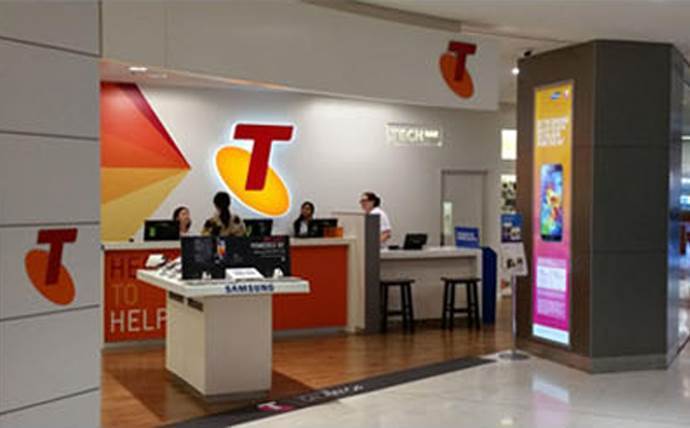
The
dark
web.
The
name
raises
all
kinds
of
questions.
What
is
the
dark
web,
really?
Where
is
it?
Can
anyone
hop
on
it?
Answering
these
questions
can
help
you
stay
safer
online.
The
story
of
the
dark
web
is
a
complicated
one.
It’s
a
small
and
highly
anonymous
layer
of
the
internet.
As
a
result,
it
has
a
reputation
for
harboring
criminal
activity.
We
often
mention
the
dark
web
in
our
blogs,
typically
when
the
conversation
turns
to
identity
theft,
data
breaches,
and
stolen
personal
information.
Rightfully
so.
Plenty
of
cybercrime
can
get
traced
right
back
to
the
dark
web.
Yet
cybercriminals
didn’t
create
the
dark
web.
And
they’re
far
from
the
only
people
who
use
it.
News
outlets
like
the
BBC
and
the
New
York
Times
have
a
presence
there,
as
does
the
U.S.
Central
Intelligence
Agency
(CIA).
Journalists,
activists,
and
everyday
citizens
use
it
as
well,
often
to
work
around
oppressive
censorship.
Even
Facebook
is
there,
providing
people
access
to
the
social
media
site
in
regions
where
it’s
blocked.
Anonymity
reigns
on
the
dark
web.
It
was
designed
to
work
that
way.
With
that,
it’s
home
to
a
mixed
bag
of
activity,
legitimate
and
illicit
alike.
Yet
that
anonymity
doesn’t
stop
us
from
putting
a
face
onto
the
dark
web—from
understanding
what
it
is,
where
it
is,
and
what
transpires
there.
That
starts
with
a
look
at
the
internet
and
the
two
primary
layers
that
make
it
up.
The
layers
of
the
internet:
The
surface
web
and
the
deep
web
If
you
visualize
the
internet
as
an
ocean,
you’ll
find
it
populated
with
websites
and
collections
of
data
at
all
depths.
Yet,
the
typical
internet
user
only
has
access
to
the
first
few
feet,
a
layer
of
the
internet
known
as
the
surface
web.
The
sights
you’ll
see
within
the
surface
web
will
look
familiar.
It’s
all
the
blogs,
shops,
social
media
sites,
and
so
on
that
you
visit
regularly.
And
it’s
easy
to
get
to.
You
only
need
to
fire
up
your
browser
and
go.
All
the
sites
are
public
facing.
With
a
quick
search,
you
can
find
them.
In
all,
the
surface
web
contains
any
destination
you
can
reach
through
search.
To
put
it
more
precisely,
the
surface
web
accounts
for
areas
of
the
internet
that
search
engines
can
“crawl”
and
index
for
search.
Estimates
vary,
yet
the
surface
web
accounts
for
roughly
4
to
5%
of
the
internet.
Now,
enter
the
deep
web,
the
next
95%
of
the
internet
that
is
not
searchable.
Yet,
that’s
not
to
say
that
you
don’t
travel
down
into
its
depths
from
time
to
time.
In
fact,
you
likely
do
it
daily.
Any
time
you
go
through
a
paywall
or
use
a
password
to
access
internet
content,
you’re
entering
the
deep
web.
The
content
found
there
is
hidden
from
search.
Examples
include
logging
into
your
bank
account,
accessing
medical
records
through
your
healthcare
provider,
or
using
corporate
web
pages
as
part
of
your
workday.
Even
streaming
a
show
can
involve
a
trip
to
the
deep
web.
None
of
that
content
is
searchable.
As
such,
the
overwhelming
majority
of
activity
within
the
deep
web
is
legitimate.
So
while
this
layer
of
the
internet
runs
deep,
it
isn’t
necessarily
dark.
The
dark
web
is
something
altogether
different.
What
is
the
dark
web?
The
dark
web
lives
within
the
deep
web.
Like
the
other
depths
of
the
deep
web,
it’s
not
searchable.
The
people
behind
the
websites
and
data
collections
on
the
dark
web
intentionally
keep
them
hidden
from
search.
And
the
reasons
vary.
Some
of
them
are
entirely
legitimate,
others
questionable,
and
several
are
outright
illegal
in
nature.
Its
origins
go
back
to
the
1990s,
when
the
U.S.
Department
of
Defense
developed
the
dark
web
as
a
means
of
anonymous
and
encrypted
communications.
That
story
might
sound
familiar.
It’s
quite
like
the
origin
story
for
the
broader
internet.
That
had
its
roots
in
the
Department
of
Defense
as
well.
So,
just
as
the
broader
internet
eventually
became
available
to
the
public,
so
did
the
dark
web
as
well.
Getting
there
requires
a
special
browser
because
the
protocols
for
the
dark
web
differ
from
the
surface
web.
Moreover,
these
browsers
strip
web
traffic
of
identifiable
information,
encrypt
it,
and
send
it
through
a
series
of
server
jumps.
The
browsing
traffic
will
appear
to
go
through
a
server
in
one
country,
then
a
different
server
in
another,
and
then
another.
These
steps
make
it
highly
difficult
to
identify
the
person
using
the
browser.
On
the
flip
side,
it
makes
it
difficult
to
identify
the
people
hosting
the
sites
and
services
on
the
dark
web
as
well.
Without
question,
privacy
is
everything
on
the
dark
web.
For
good
and
for
bad.
Legitimate
uses
of
the
dark
web
While
the
notion
of
the
dark
web
typically
gets
raised
in
the
context
of
cybercrime
and
other
illegal
activity,
it
has
legitimate
uses.
Some
of
these
use
cases
include:
Circumventing
censorship
Well-regarded
news
outlets
such
as
the
BBC
and
Pro
Publica
maintain
a
presence
on
the
dark
web
to
ensure
that
anyone
can
access
their
reporting.
This
includes
people
in
nations
and
regions
where
certain
news
sources
are
censored.
Private
communication
For
the
particularly
privacy-conscious,
the
dark
web
hosts
several
resources
for
encrypted
communication.
That
includes
email
clients,
internet
chat,
and
even
social
media
sites.
Whistleblowing
Anonymous
tips
are
a
part
of
national
security,
law
enforcement,
and
journalism
as
well.
The
private
nature
of
the
dark
web
confers
an
additional
degree
of
anonymity
to
tipsters.
The
dark
web
isn’t
a
place
everyday
internet
users
will
need,
or
even
want,
to
go.
It’s
far
more
complicated
than
the
surface
web—and
going
in
without
taking
several
security
measures
can
make
the
trip
a
risky
one.
The
dark
web
as
a
marketplace
for
cybercrime
This
is
where
the
rubber
meets
the
road
from
an
online
protection
standpoint.
The
dark
web
is
also
a
marketplace
for
hackers
and
bad
actors.
In
several
ways—as
a
place
to
purchase
and
rent
malware,
a
repository
for
stolen
information,
and
a
place
to
communicate
and
coordinate
attacks.
For
starters,
the
dark
web
is
populated
with
dark
marketplaces.
And
difficult-to-trace
cryptocurrency
is
the
coin
of
the
realm.
With
dark
web
stores
stocked
with
ready-made
malware
kits,
bad
actors
can
launch
attacks
with
little
need
for
technical
expertise.
Others
have
done
the
work
for
them.
Cybercrime
groups
of
all
sizes
prop
up
these
shops,
which
they
also
use
to
rent
out
other
services
for
attacks.
For
example,
a
small-time
bad
actor
could
easily
lease
a
botnet
to
wage
an
attack
that
slows
a
targeted
website
to
a
crawl.
Some
cybercrime
groups
will
provide
hackers
who
can
run
attacks
on
someone
else’s
behalf,
creating
a
mercenary
“hacker
for
hire”
gig
economy.
Likewise,
information
stolen
from
a
data
breach
can
end
up
in
dark
web
marketplaces
as
well.
The
personal
information
posted
in
these
marketplaces
can
range
anywhere
from
emails
and
passwords
to
in-depth
information
like
tax
numbers,
health
information,
and
driver’s
license
numbers.
Some
of
it
goes
up
for
sale.
Some
of
it
gets
dumped
there
for
free.
With
the
right
information
in
hand,
cybercriminals
can
commit
acts
of
identity
theft.
That
includes
claiming
unemployment
benefits
and
tax
refunds
in
someone
else’s
name.
In
extreme
cases,
it
can
lead
to
bad
actors
can
outright
impersonate
their
victims,
racking
up
debts
and
criminal
records
along
the
way.
Some
hacking
groups
sell
hacked
accounts
outright.
For
a
couple
hundred
dollars,
they
offer
up
login
and
password
information
for
bank
accounts
that
have
a
couple
thousand
dollars
in
them.
Also
available,
pre-hacked
email,
social
media,
and
online
payment
accounts.
If
it’s
hackable
and
has
value,
it’s
likely
for
sale
on
the
dark
web.
Protect
yourself
from
hackers
and
bad
actors
on
the
dark
web
With
all
this
shady
activity
on
the
dark
web,
you
might
wonder
how
you
can
protect
yourself.
In
fact,
you
can
take
several
steps
to
help
prevent
your
information
from
finding
its
way
there.
And
you
also
can
take
other
steps
if
your
information
unfortunately
does
end
up
on
the
dark
web.
Installing
online
protection
software
is
the
first
step.
Online
protection
software
can
help
prevent
many
of
the
attacks
bad
actors
can
purchase
on
the
dark
web.
It
protects
against
ransomware,
adware,
spyware,
and
all
manner
of
malware,
whether
it’s
pre-existing
or
entirely
new.
Yet
today’s
online
protection
goes
far
beyond
antivirus.
Comprehensive
protection
like
ours
protects
your
privacy
and
identity
as
well.
It
can
monitor
your
identity
and
credit,
create
strong
passwords,
and
clean
up
your
personal
information
online.
Monitor
your
identity:
An
identity
monitoring
service
can
actively
scan
the
dark
web
for
personal
info
like
your
date
of
birth,
email
addresses,
credit
card
numbers,
personal
identification
numbers,
and
much
more.
In
the
event
you
fall
victim
to
identity
theft,
our
identity
theft
coverage
and
restoration
can
provide
up
to
$1
million
in
coverage
to
cover
the
costs.
Plus,
it
provides
the
services
of
a
recovery
expert
with
limited
power
of
attorney
to
help
you
repair
the
damage
done.
Keep
an
eye
on
your
credit:
If
you
spot
unusual
or
unfamiliar
charges
or
transactions
in
your
account,
bank,
or
debit
card
statements,
follow
up
immediately.
That
might
indicate
improper
use.
In
general,
banks,
credit
card
companies,
and
many
businesses
have
countermeasures
to
deal
with
fraud.
Moreover,
they
have
customer
support
teams
that
can
help
you
file
a
claim
if
needed.
Given
all
the
accounts
you
likely
have
a
credit
monitoring
service
can
help.
McAfee’s
credit
monitoring
service
can
help
you
keep
an
eye
on
changes
to
your
credit
score,
report,
and
accounts
with
timely
notifications
and
provide
guidance
so
you
can
take
action
to
tackle
identity
theft.
Create
and
maintain
strong,
unique
passwords:
With
the
high
number
of
accounts
you
need
to
protect,
creating
strong,
unique
passwords
for
each
one
can
get
time
consuming.
Further,
updating
them
regularly
can
become
a
time-consuming
task.
That’s
where
a
password
manager
comes
in.
A
password
manager
does
the
work
of
creating
strong,
unique
passwords
for
your
accounts.
These
will
take
the
form
of
a
string
of
random
numbers,
letters,
and
characters.
They
will
not
be
memorable,
but
the
manager
does
the
memorizing
for
you.
You
only
need
to
remember
a
single
password
to
access
the
tools
of
your
manager.
Close
old,
risky
accounts:
The
more
online
accounts
you
keep,
the
greater
the
exposure
you
have
to
data
breaches.
Each
account
will
have
varying
degrees
of
personal
and
financial
information
linked
to
it.
And
that
means
each
one
carries
a
varying
degree
of
risk
if
it
gets
breached.
Moreover,
some
sites
and
services
protect
data
better
than
others,
which
adds
another
dimension
of
risk.
Closing
old
and
particularly
risky
accounts
can
decrease
the
risk
of
your
personal
and
financial
information
winding
up
in
the
hands
of
an
identity
thief.
With
security
and
savings
in
mind,
McAfee
created
Online
Account
Cleanup.
It
finds
and
requests
the
deletion
of
unused
accounts
and
protects
your
personal
data
from
data
breaches
as
a
result.
Monthly
scans
across
your
online
accounts
show
a
risk
level
for
each
account
and
help
you
decide
which
ones
to
delete.
Use
two-factor
authentication:
Two-factor
authentication
is
an
extra
layer
of
defense
on
top
of
your
username
and
password.
It
adds
a
one-time-use
code
to
access
your
login
procedure,
typically
sent
to
your
smartphone
by
text
or
call.
Together,
that
makes
it
tougher
for
a
crook
to
hack
your
account
if
they
get
hold
of
your
username
and
password.
If
any
of
your
accounts
support
two-factor
authentication,
the
few
extra
seconds
it
takes
to
set
up
is
more
than
worth
the
big
boost
in
protection
you’ll
get.
Protect
yourself
from
cybercriminals
on
the
dark
web
The
“dark”
in
the
dark
web
stands
for
anonymity.
And
with
anonymity,
all
kinds
of
activity
follow.
Good
and
bad.
From
a
security
standpoint,
the
dark
web
is
a
haven
for
all
manner
of
cybercriminals.
Understanding
how
they
use
the
dark
web
can
help
you
protect
yourself
from
their
activities.
You
have
tools
for
prevention,
and
you
have
resources
available
if
your
information
ends
up
there
or
leads
to
identity
theft.
By
putting
a
face
on
the
dark
web,
you
put
a
face
on
cybercrime
and
can
help
reduce
the
risk
of
it
happening
to
you.





